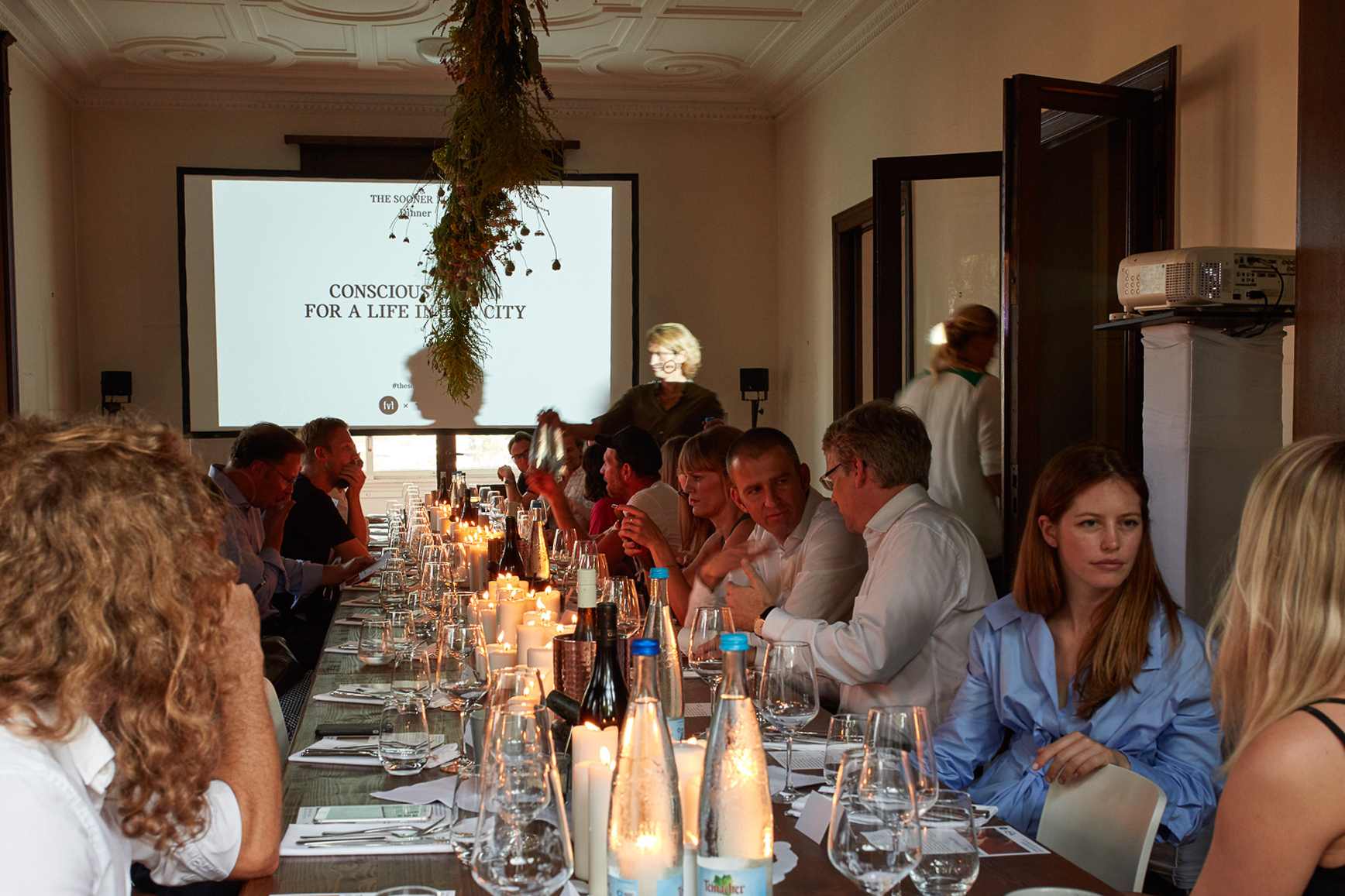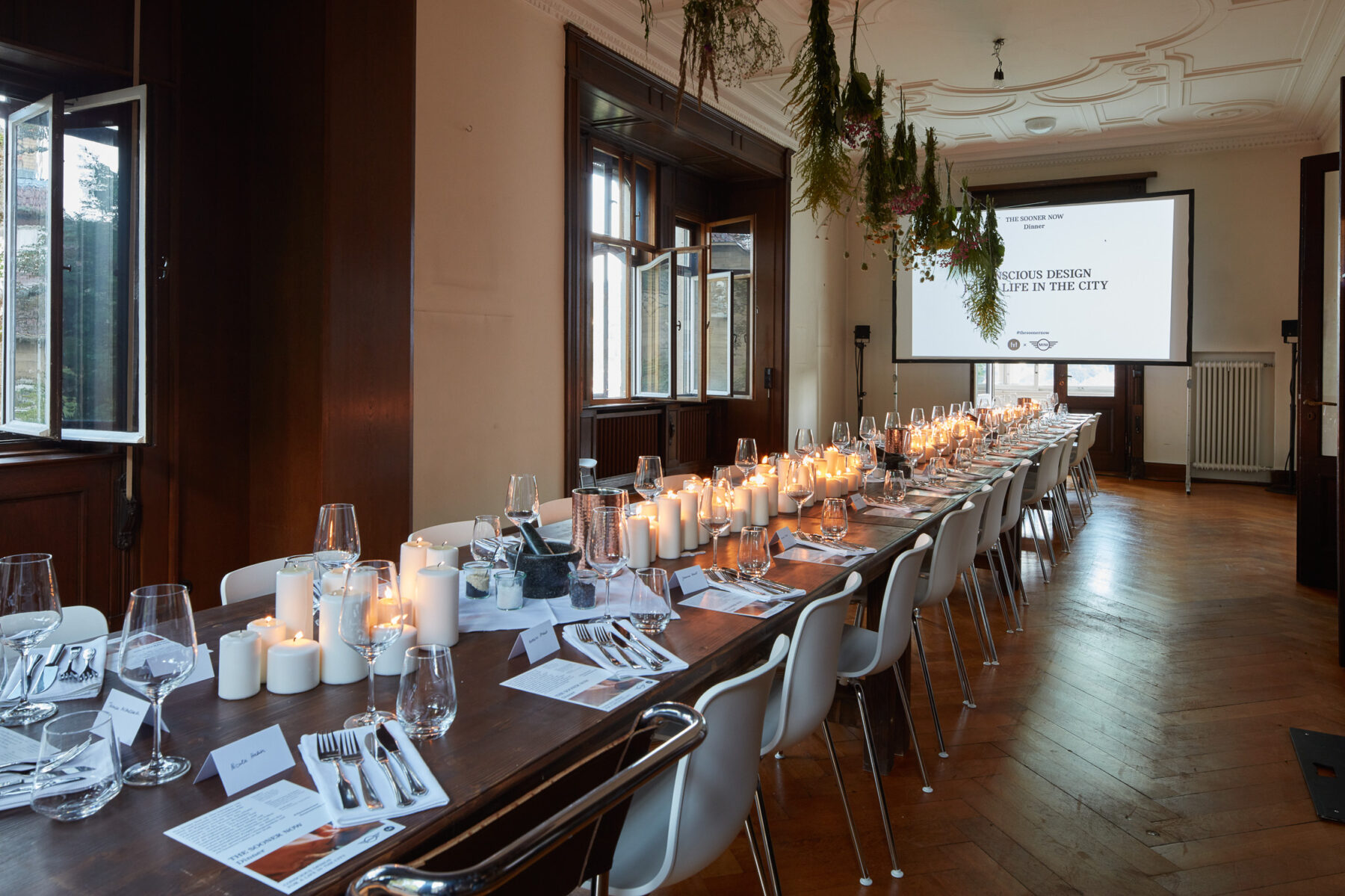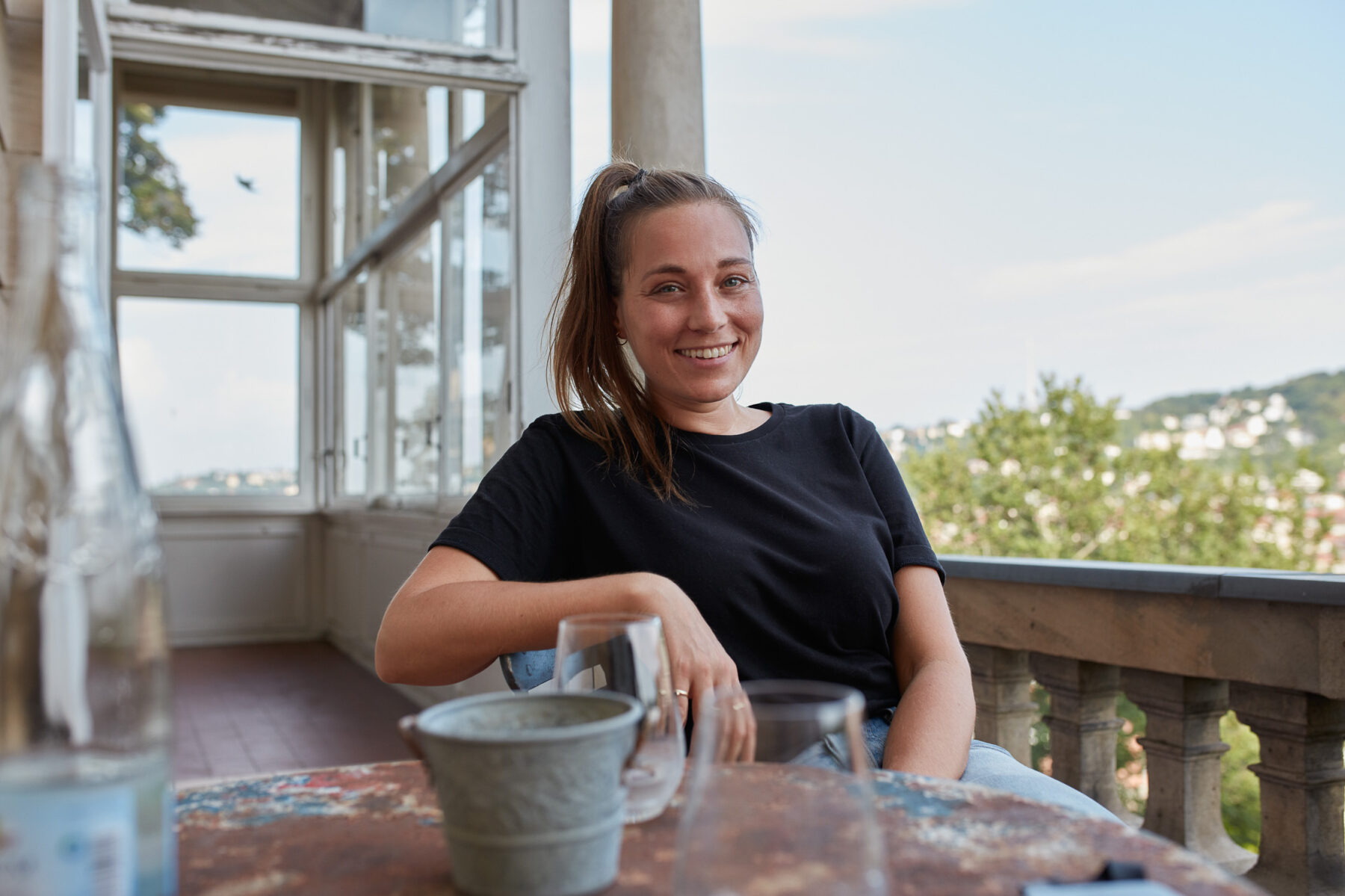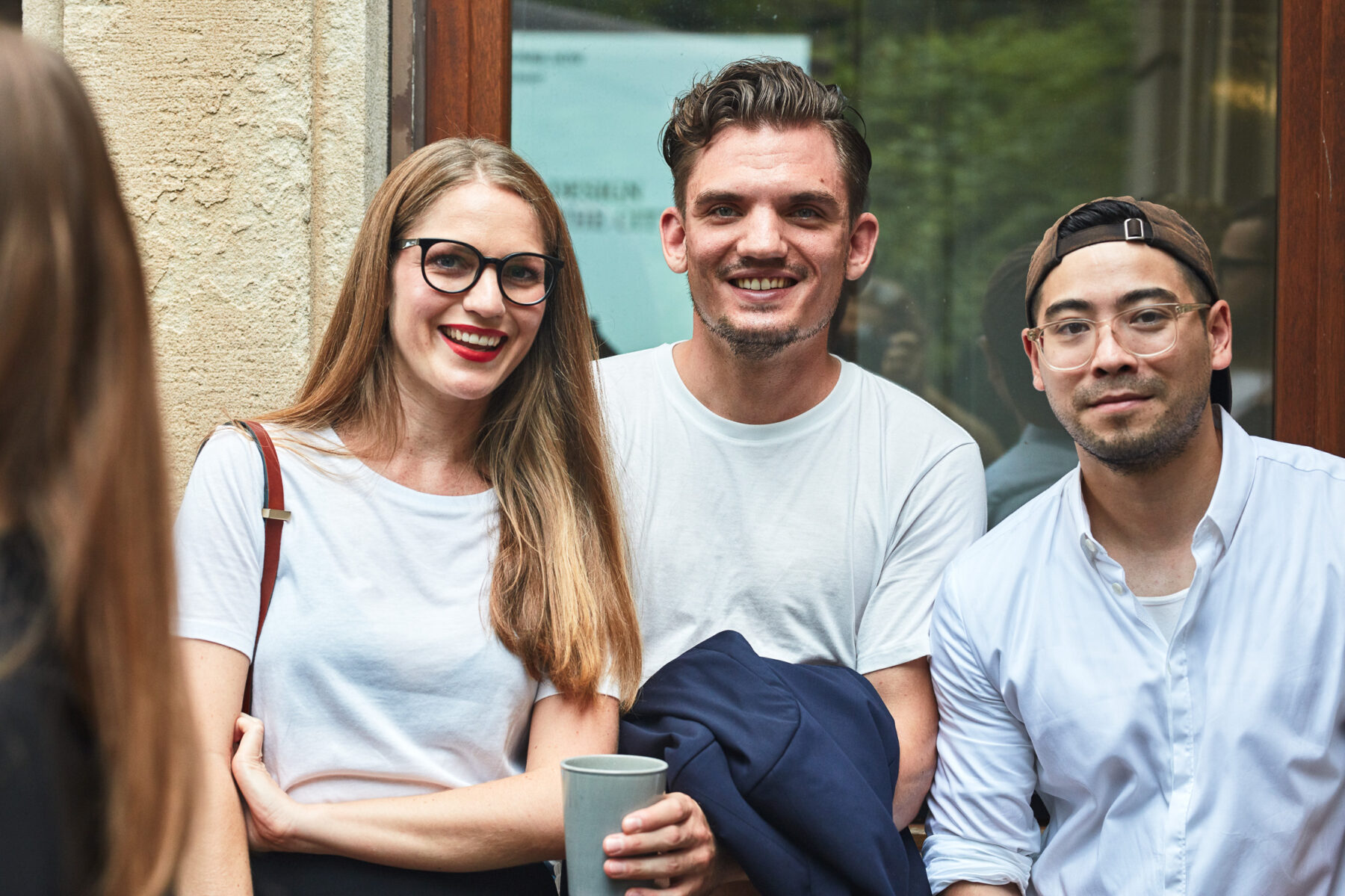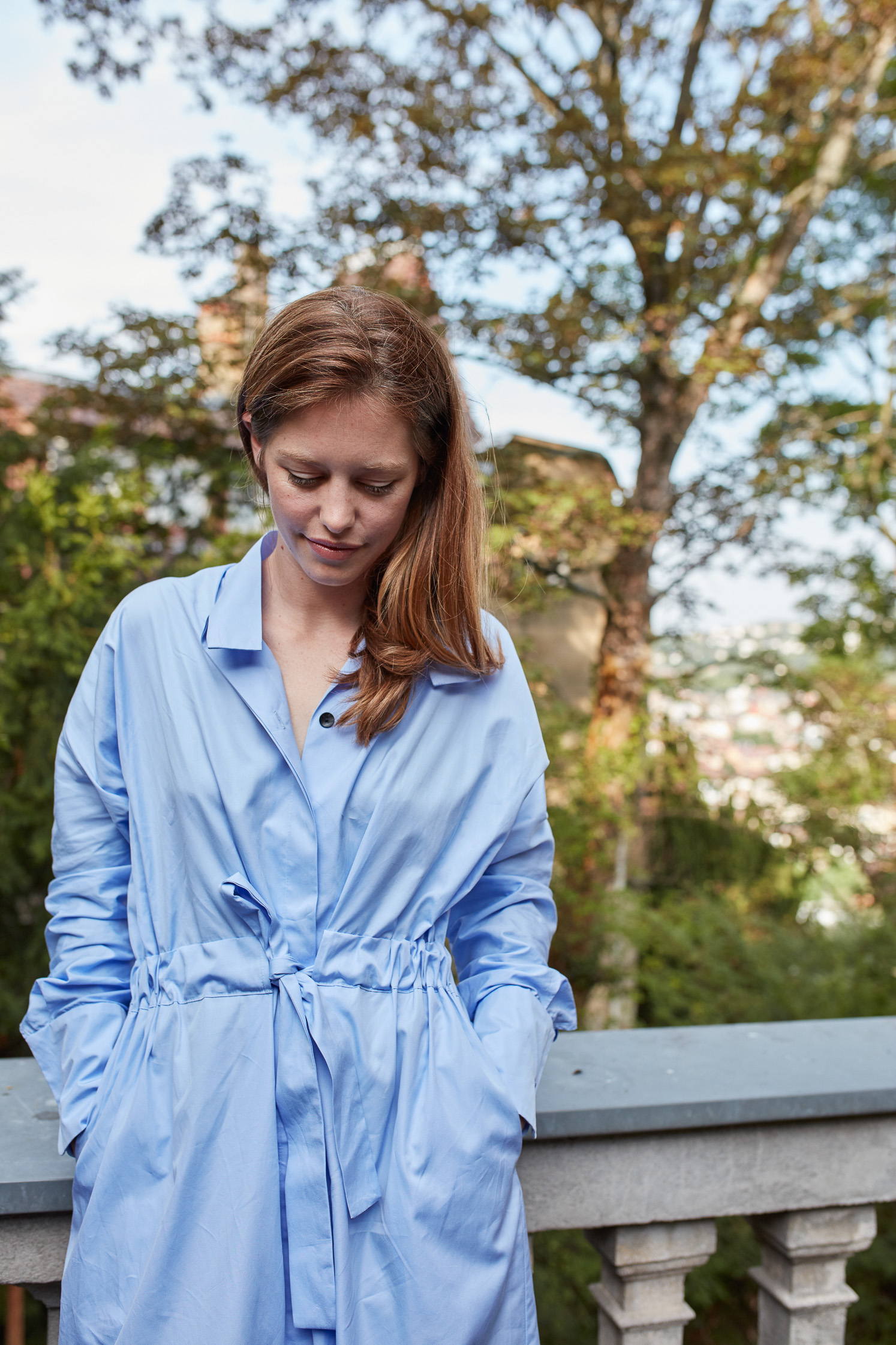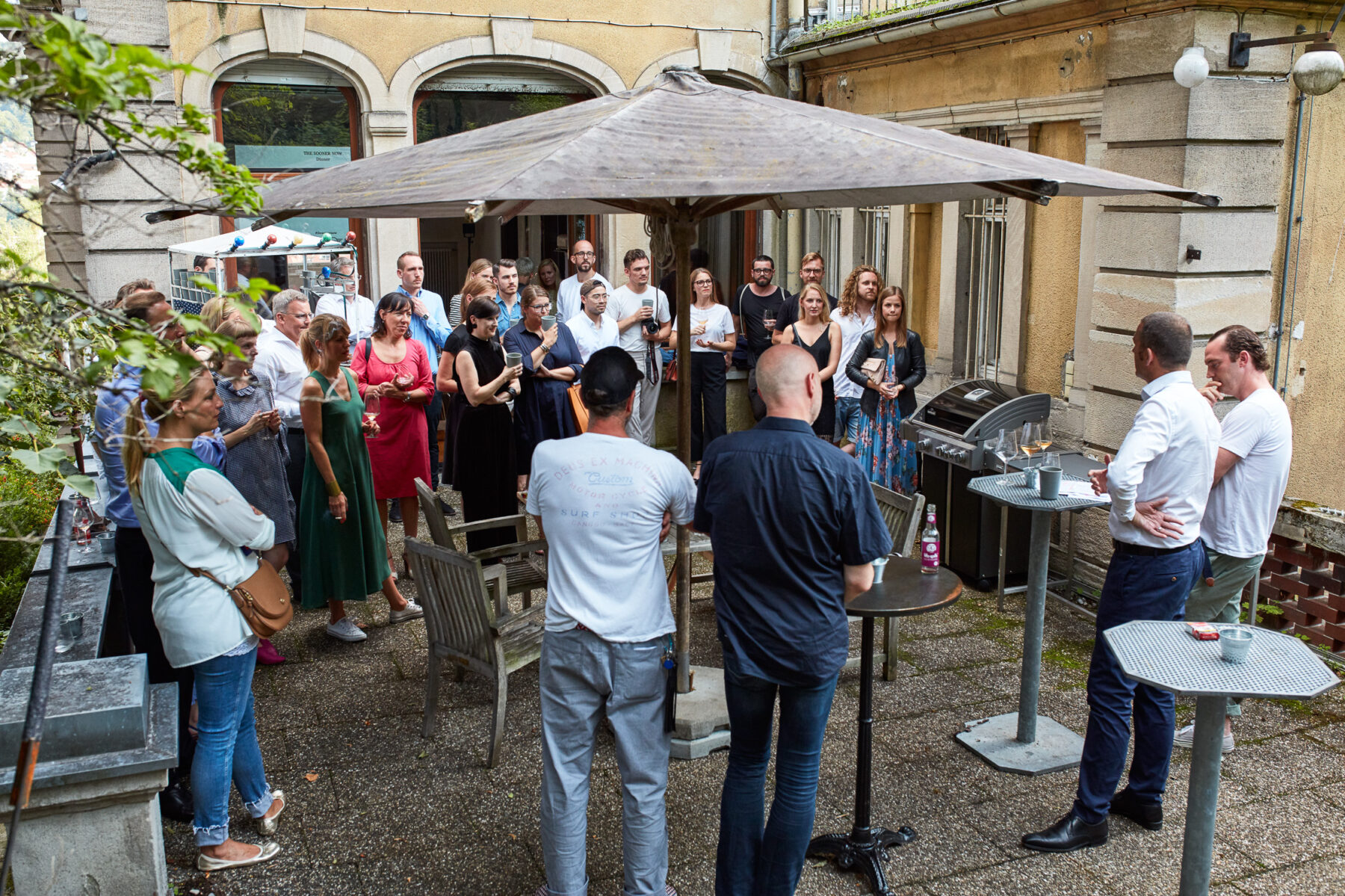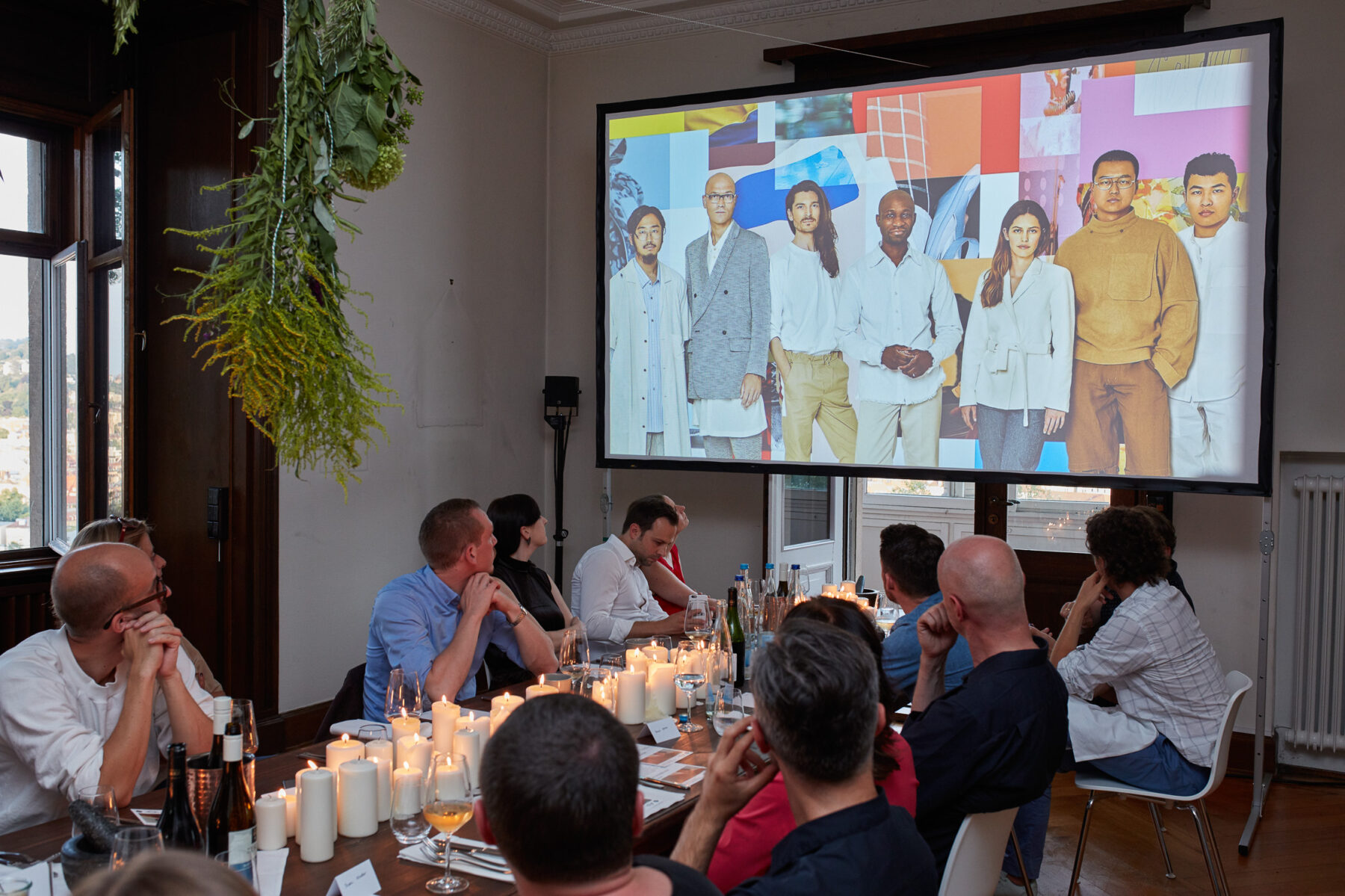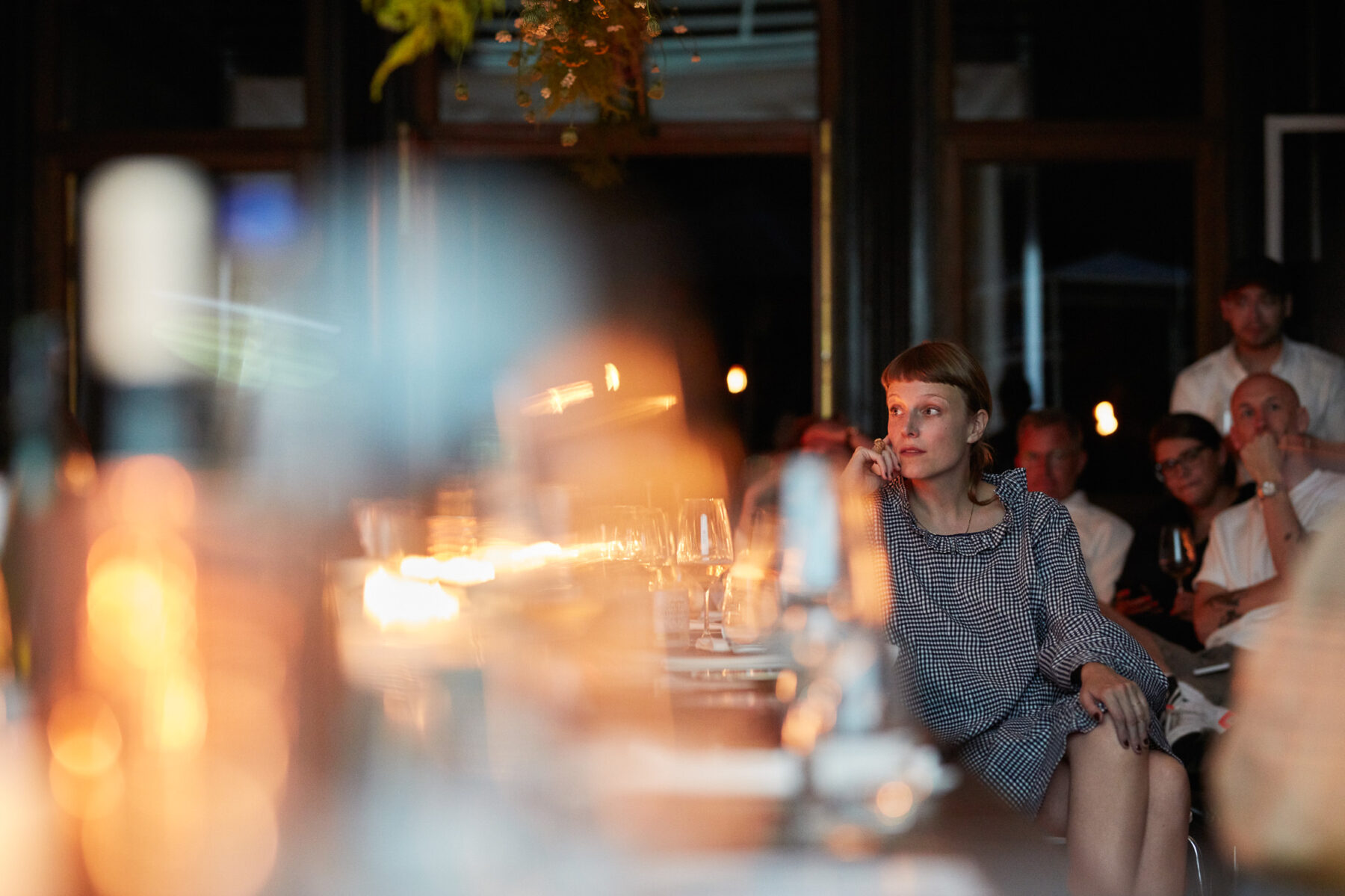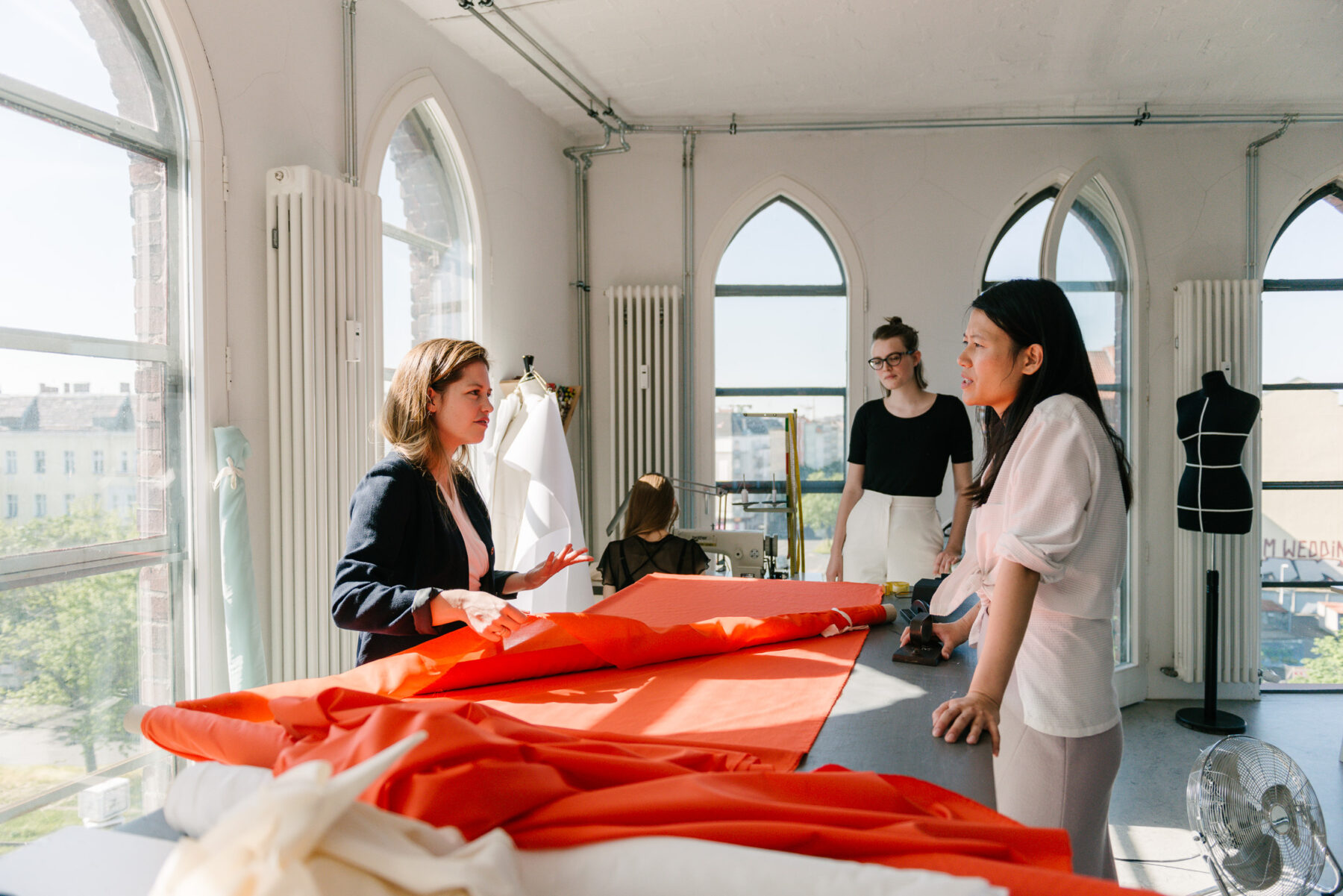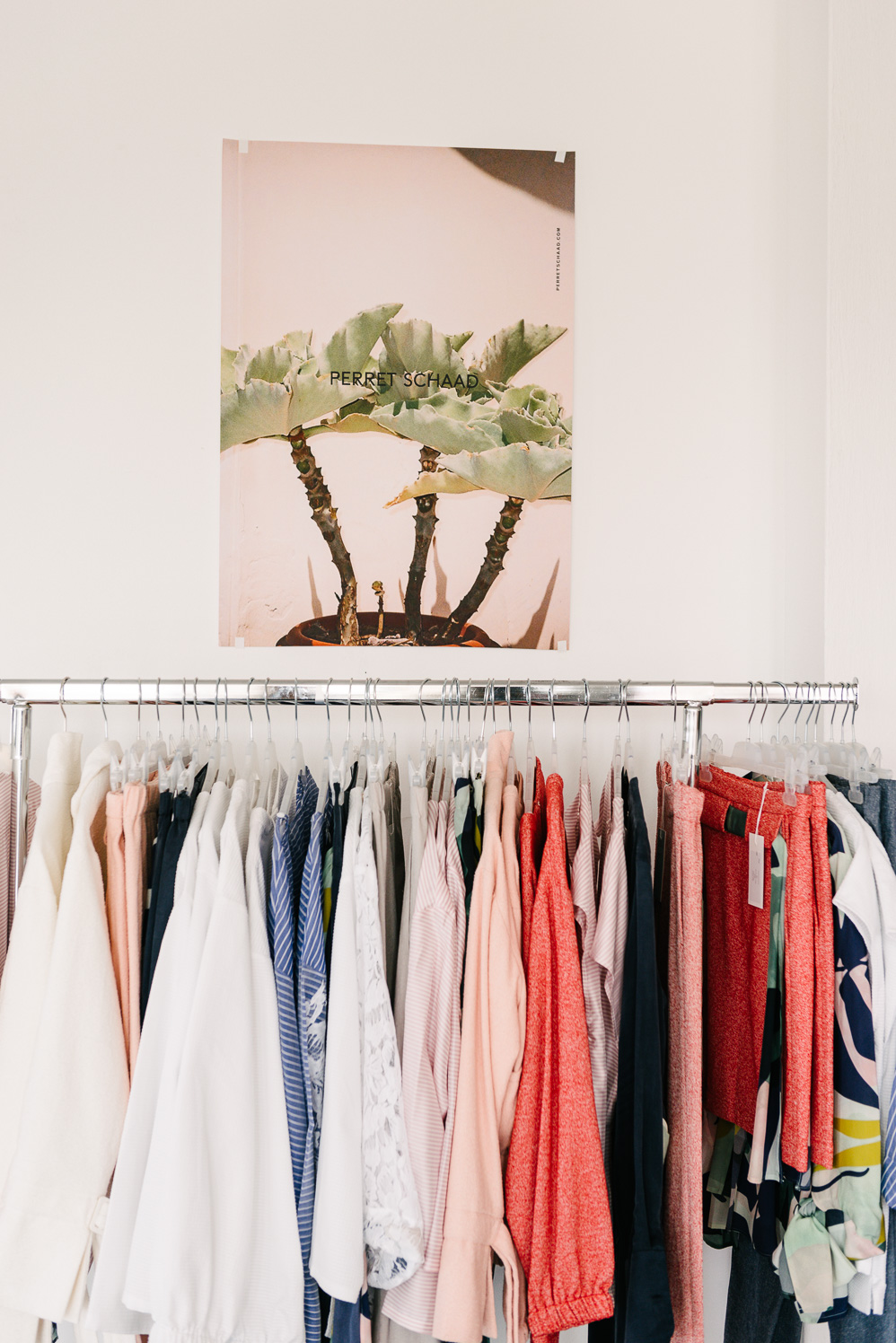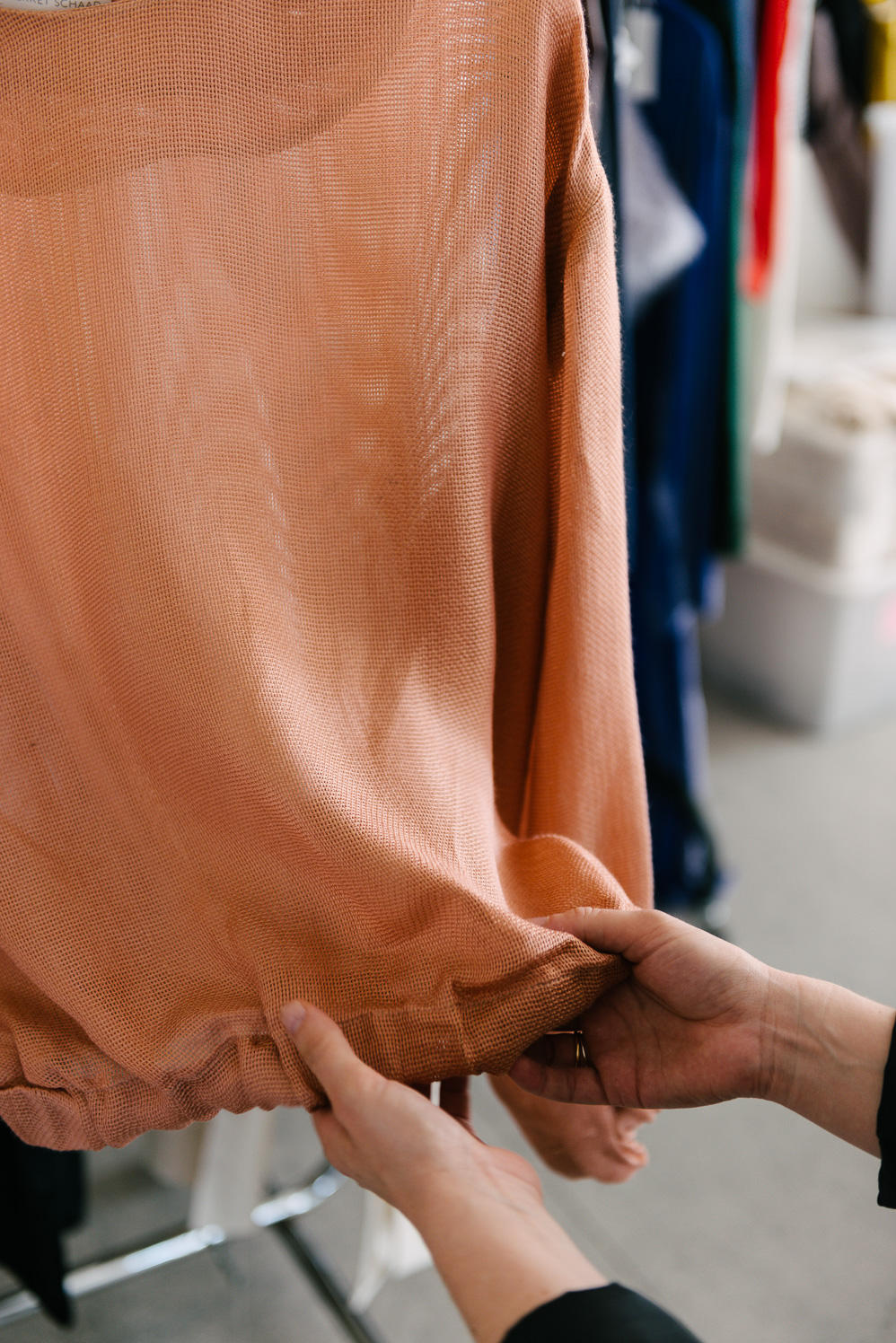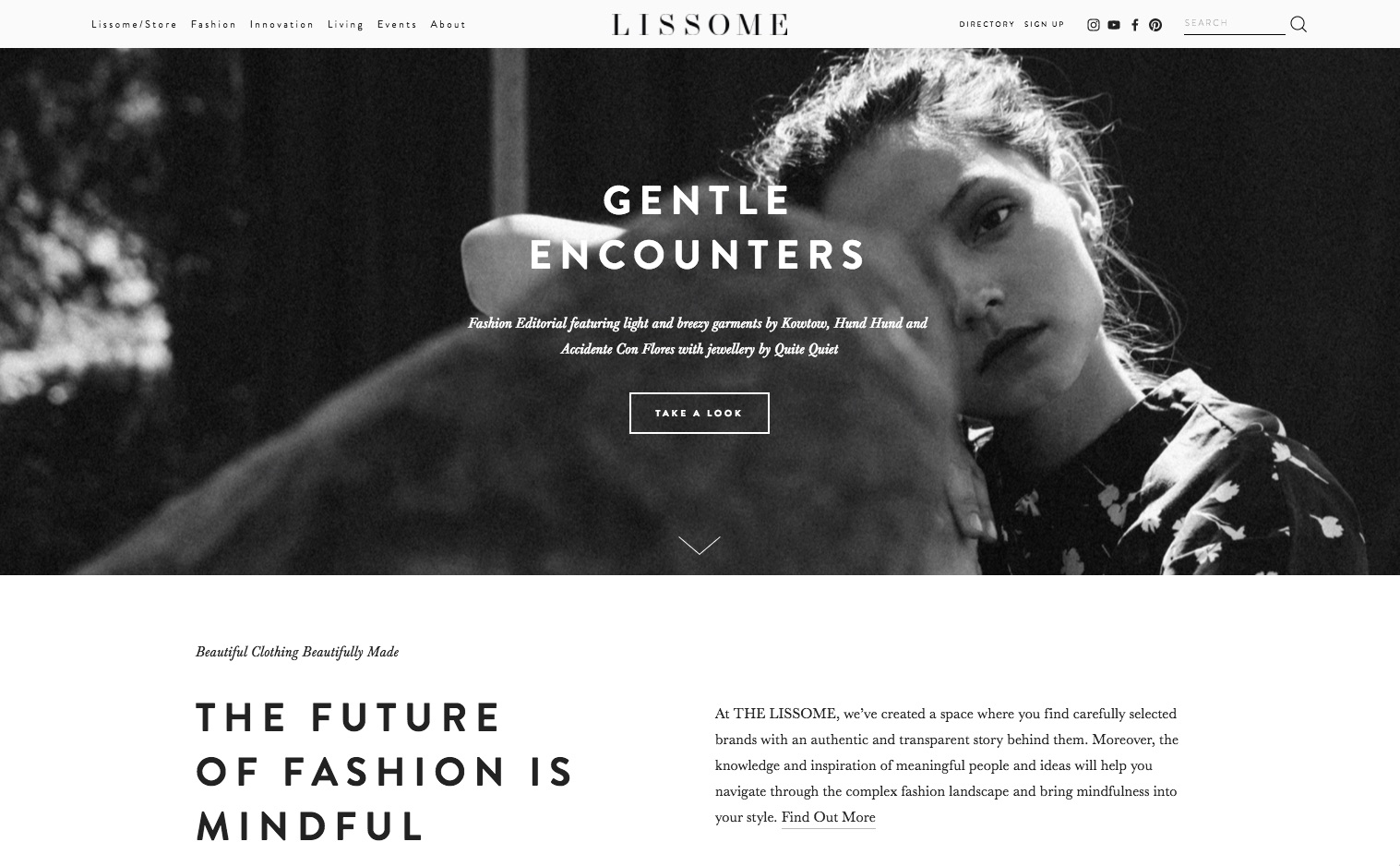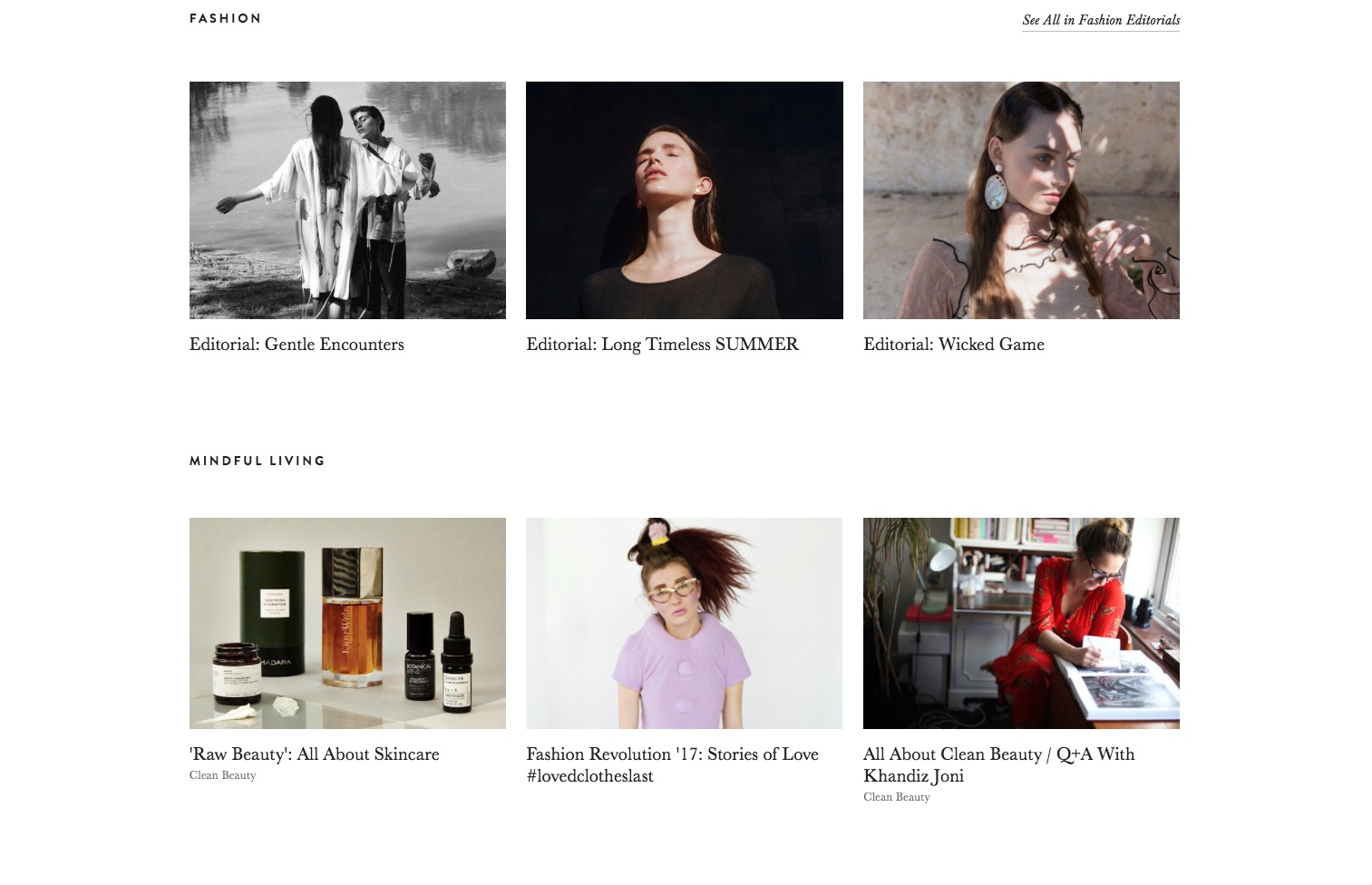Do we buy too many clothes? What do we need to know in order to make the ‘correct’ decisions when consuming? And in our fast-paced, urban lives how much appreciation do we have for the elements that make up our own personal style?
For the second dinner of the joint initiative, The Sooner Now, Freunde von Freunden and MINI Germany headed to Stuttgart to discuss the possibility of a healthy and liveable future for the southern German city. The future starts with every decision made today, our everyday personal consumption being a prime example. The need to contemplate how urban living can become ‘conscious’, namely with an awareness for the environment and natural resources is inescapable, and it quickly became clear that our guests fundamentally shared this view when it comes to the topic of sustainability.
Urban life with its trends, fast-pace, vast array of consumer options and overriding demand for comfort and ease belongs admittedly to the very factors that stand in the way of sustainable urban development. Time then, to put the focus on oneself, and as the name of the initiative suggests: preferably soon, preferably now. And indeed preferably regarding a theme that pertains to everyone. Following aperitifs and dinner, The Sooner Now served up a discussion with four experts on the theme ‘Conscious Fashion for a Life in the City.’
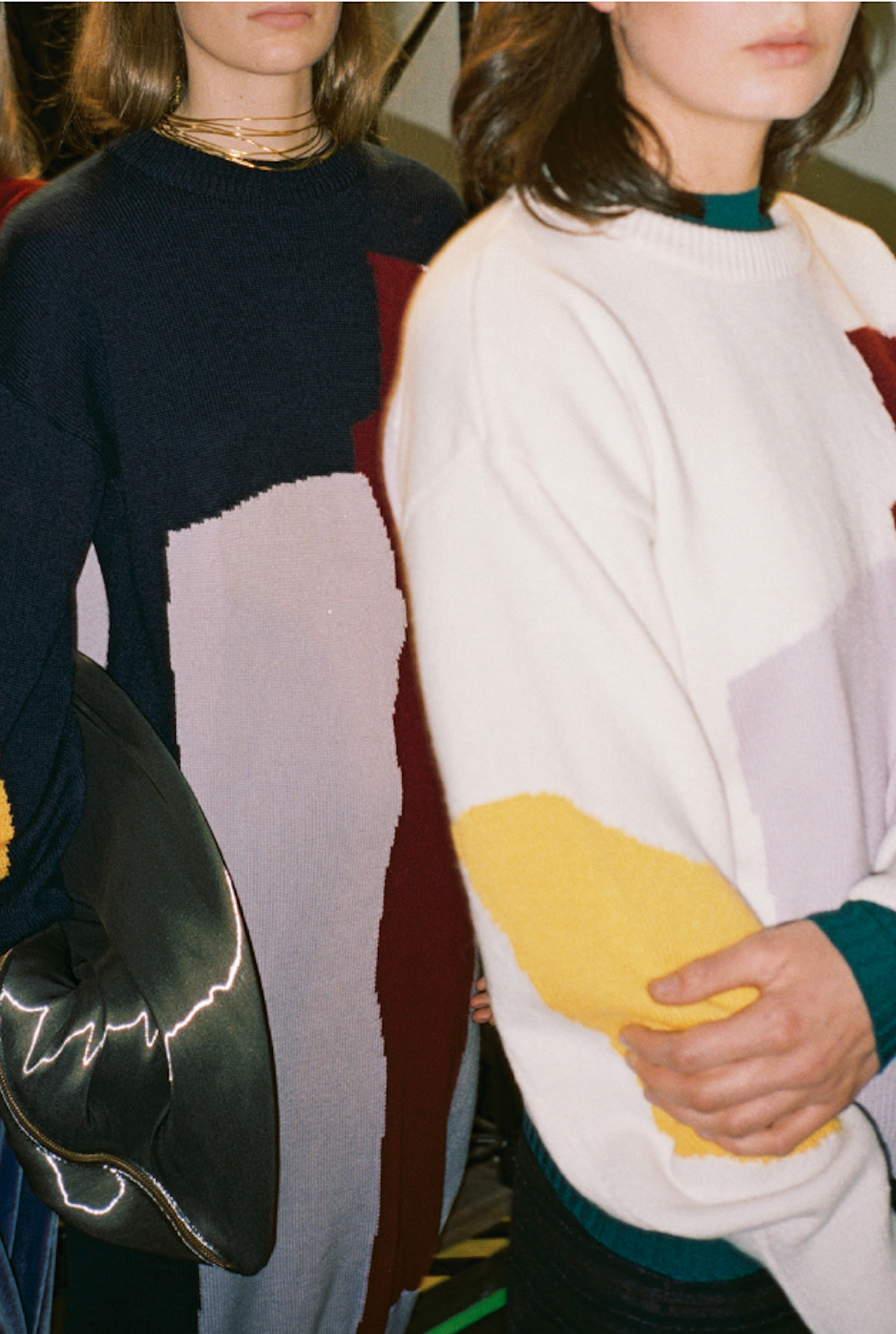
However, sustainable fashion still doesn’t play a large role in the mainstream. To many, the term conjures the image of unstylish hemp garments and many others are simply not aware of the poor working conditions of those who produce their clothes. “To make people conscious consumers, eco-fashion needs to be made desirable and to lose the sense of seriousness that surrounds it,” says Sabine Ringel, the director of MINI Fashion during our post-dinner discussion.
“A way to achieve this is through creating high quality products, which also look great.” Further to this, all of our speakers agreed that conscious and ethical consumption comes as a result of us placing more value in the clothes that we buy. According to Johanna Perret, this also comes with good quality and care; “Our grandmothers knew how to treat their possessions well and naturally they then lasted much longer.” Dörte Lange echoed Johanna’s sentiment, “buying lots of cheap items, and then throwing things away readily is always going to be bad for both humans and the environment. This is a fact that isn’t hard to realize.” Her advice: “Reverse the fear of abandonment through mindfulness.” According to Johanna, it’s the small labels that could have the potential to be on the front line, acting as pioneers for the expansion of eco-fashion, for others to follow. And indeed generally, says Sabine, brands should stop trying to avoid responsibility when it comes to fair production, and instead, “must have an interest in, and responsibility to all levels of the supply chain.”
Ultimately who must take responsibility for real change? “Everyone,” says Dörte, a statement accompanied by nods of agreement from all of our speakers. Now’s the time for consumers, fashion labels, the media, and of course politicians to take new and important steps towards sustainability. We shouldn’t forget that all of us have a certain power over this process because it’s we who decide what we buy and how much we consume. Fundamentally, if we don’t change our way of thinking, we’re going to feel the consequences very close to home.
Sustainable fashion for a better life in the city – The speakers
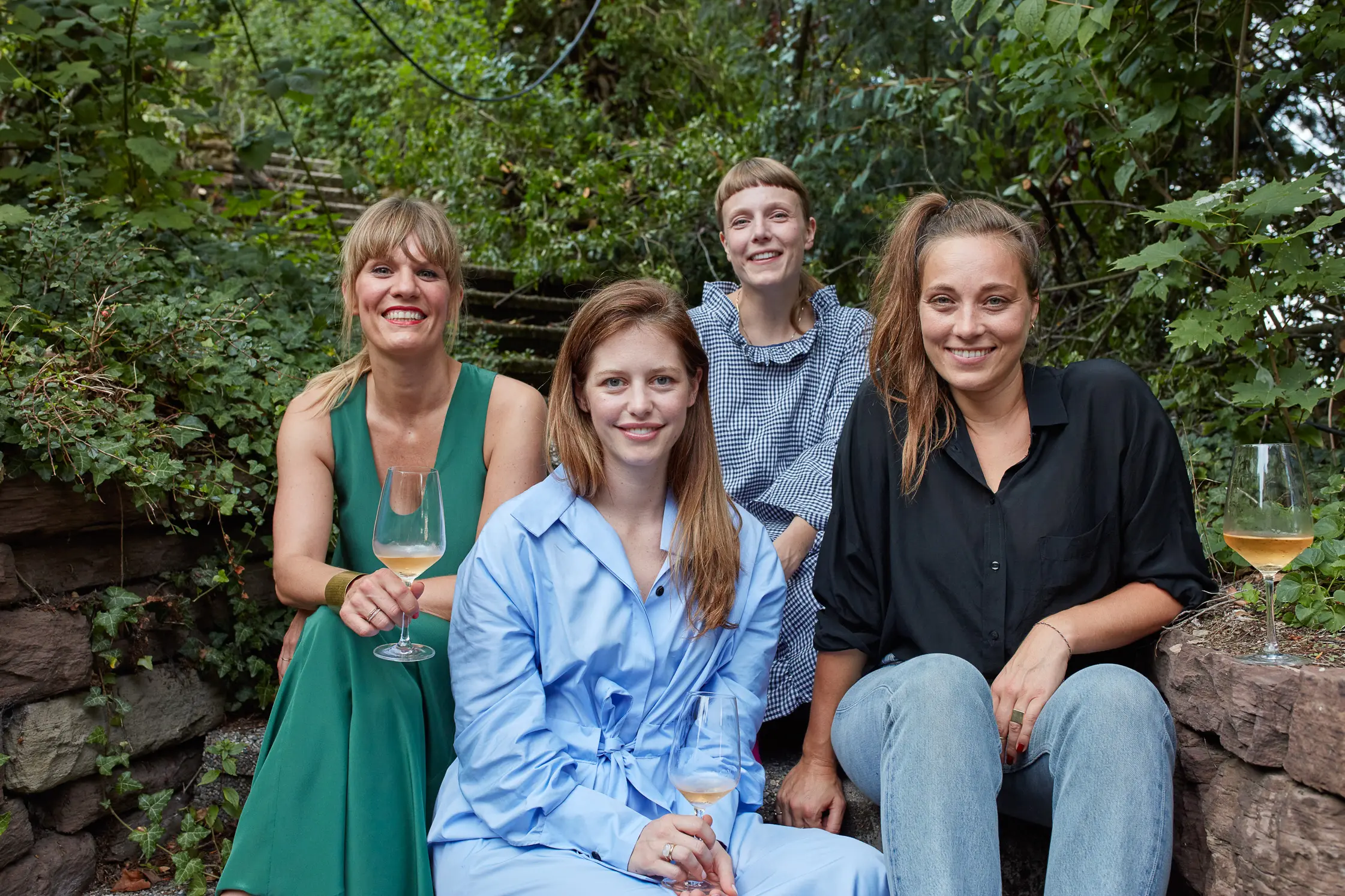
“Mindful fashion is a path, which slowly but surely we’ve begun to tread.”
Anna: Johanna, Perret Schaad only produces locally in Germany. Why didn’t you decide to outsource your production to a low-wage country?
Johanna: When you start your own company, you generally start off small, and therefore, it makes sense to produce locally. Also, when you start out you are producing relatively small quantities of stock – factories in Africa and Asia will normally only produce very high quantities, and no doubt discard half of it.
Anna: Why exactly do you not want that?
Johanna: Out of pure conviction. From the outset, we wanted the way in which our goods are produced to be accountable and the people who produce our product to be adequately paid. Furthermore, we were aware that in Germany there are really great manufactures and production centers, which were in decline. We make knitwear, leather goods and womenswear, and we produce these at three locations, all of which still use traditional methods of craftsmanship. It’s really fun to discuss our designs with the manufacturers that we use, and naturally that works really well when there is no language barrier between us. We really value a close and above all long-term working relationship, and view them as something very sustainable.
Anna: That makes sense. Also in regards to public awareness, because even though ‘slow fashion’ has unfortunately not yet permeated into the mainstream, fair and local production is becoming increasingly interesting for customers. Why do you not use the fact that your label is committed to conscious design as an advertising strategy?
Johanna: Good question…I think that for us conscious design is a matter of conviction, something implicit, and therefore not something that we use as a deliberate marketing tool. The people who buy our products know why our prices rise and that we are a fair and sustainable label.
Impressions from an evening in Stuttgart
Anna: A potential customer can figure that out when, for example, they go to the homepage of your website. It’s almost the opposite way that you have chosen Dörte, in the sense that you offer a platform for those who have already been converted, so-to-speak, to sustainable fashion and are therefore subsequently actively seeking it out. Do you feel that demand has risen?
Dörte: Indeed. I have the impression that mindful fashion is like a path, which slowly but surely we have begun to tread to the next level. In the food sector, we have already come so far; there are chains of organic ‘bio’ supermarkets all over Germany and many people pay close attention to what they eat, with a desire to ensure they eat seasonal produce, sourced locally. The step over to fashion is coming, but we haven’t quite reached it yet.
Anna: This way of thinking regarding food has also taken time though. A good 30 years
Dörte: Yes, true. People have been working with food in this way for ages. The principle for sustainable food and sustainable fashion is the same—cotton needs to be produced in the same way as carrots.
Anna: At the end of the day cotton is also a plant. It takes its time to grow and develop. Speaking of time, Sabine, you at MINI Fashion must know only too well how quickly trends change, especially in urban centers. Do you think that an appreciation for good design has, as a consequence, been lost in the world’s metropolises.
Sabine: I think, as Dörte has already said, that has changed a bit once more. I have the feeling that we have reached our limit, and that we are heading towards a change in the way we think. That definitely stands amongst my circle of friends and acquaintances. I think that the consciousness we now have for food and fresh produce is beginning to reach other sectors—and one of those is fashion.
Anna: I think so, too. However, ‘slow fashion’ seems too removed from this burgeoning consciousness to reach the mainstream. Perhaps it still needs to lose its somewhat ’70s-era beige and hemp image!
Sabine: Yes, there is indeed an image problem, but only to an extent; I think that the reputation of sustainable fashion is much worse than the actual product. These days we are also at a very different technological level than we were ten, 20 years ago. Sustainable fashion doesn’t consist exclusively of drab beige and brown garments.
“Younger generations are much more actively interested in where their clothes come from.”
Dörte: Even amongst fashion labels that place the environment and fairness firmly at the center of their marketing campaigns or even their very mission statement, aesthetic quality for a long time was not a particular priority. I mean, in the ’70s people buying into these brands actively didn’t want the clothes to have ‘aesthetic quality.’
Anna: Because people wanted to clearly show their environmental convictions?
Dörte: Yes, in the ’90s labels eventually emerged which wanted to prioritize healthy, fair working conditions in the countries which were producing garments. Currently we have very different trends. Mostly started up by millennials, many smaller labels, based in the USA but also increasingly in Europe, view the visuals of the brand and the garments’ aesthetic quality to be of overriding importance, but also view sustainable production and fair and safe working conditions for those manufacturing their garments to be imperative.
Anna: So it has reversed? Previously, people wanted to show that what they were wearing was sustainable through a certain aesthetic, whereas today people just want to wear cool clothes, which also happen to be sustainable and ethically produced. However, it still hasn’t really ‘gone mainstream’. If I wanted right now to get involved with ‘slow fashion’ who, and indeed where would I turn to?
Johanna: Just pop into a shop and see where their garments are made, this is a really good first indicator as to the brand’s sustainability, no? If a T-shirt costs five, ten euros, then you can be fairly certain that it wasn’t ethically produced.
Anna: I mean, vice versa, lots of people think that if they buy something with a high price-point, then they can be sure that it was produced ethically and fairly. Is this a fallacy?
“Just because it’s expensive, doesn’t necessarily mean that it’s ethically produced.”
Sabine: A high price-point is absolutely no guarantee of sustainable production! Lots of conventional labels earn lots of money in this way; a large component is just marketing and not every single euro is necessarily channelled straight into the product. So the reverse doesn’t stand. Just because it’s expensive, doesn’t necessarily mean that it’s ethically produced.
Anna: That’s a really important point – since channelling money into advertising campaigns and testimonials is going to make a company much more money than paying the people who have made the garment a fair wage.
Regarding testimonials, the co-founder of FvF, Tim Seifert comes to mind. He is currently working on a project with Adidas in cooperation with ‘Parley for the Oceans’, for which Pharrell Williams has featured on an advertising campaign. The ocean protection organization, which the sports brand is working with, fishes plastic waste out of the sea and then up-cycles it into a fabric which is used for part of one of Adidas’ running shoes.
Tim: Does something like this really increase our awareness of sustainable fashion? I think, for example, that the shoes that they have produced look great. I’d buy them because they look cool, but I wouldn’t necessarily inform myself as to how they were made.
Anna: Yet you sit here now and are talking to us about them.
Dörte: For now, we should welcome every step in the right direction. Are they making this product as a one-off, one time thing? That’s an important question, because if so then it just becomes a sales point, a marketing gimmick. But if they say, ‘ok, we’ll use this as a hook with which to shed light on our company structure and to see what we could really do better.’ Therefore, going forward, looking more closely at the materials we use and using those which are more environmentally friendly, so that in a couple of years we can see an actual improvement on the ground. If that’s the case, then I think it’s really cool.
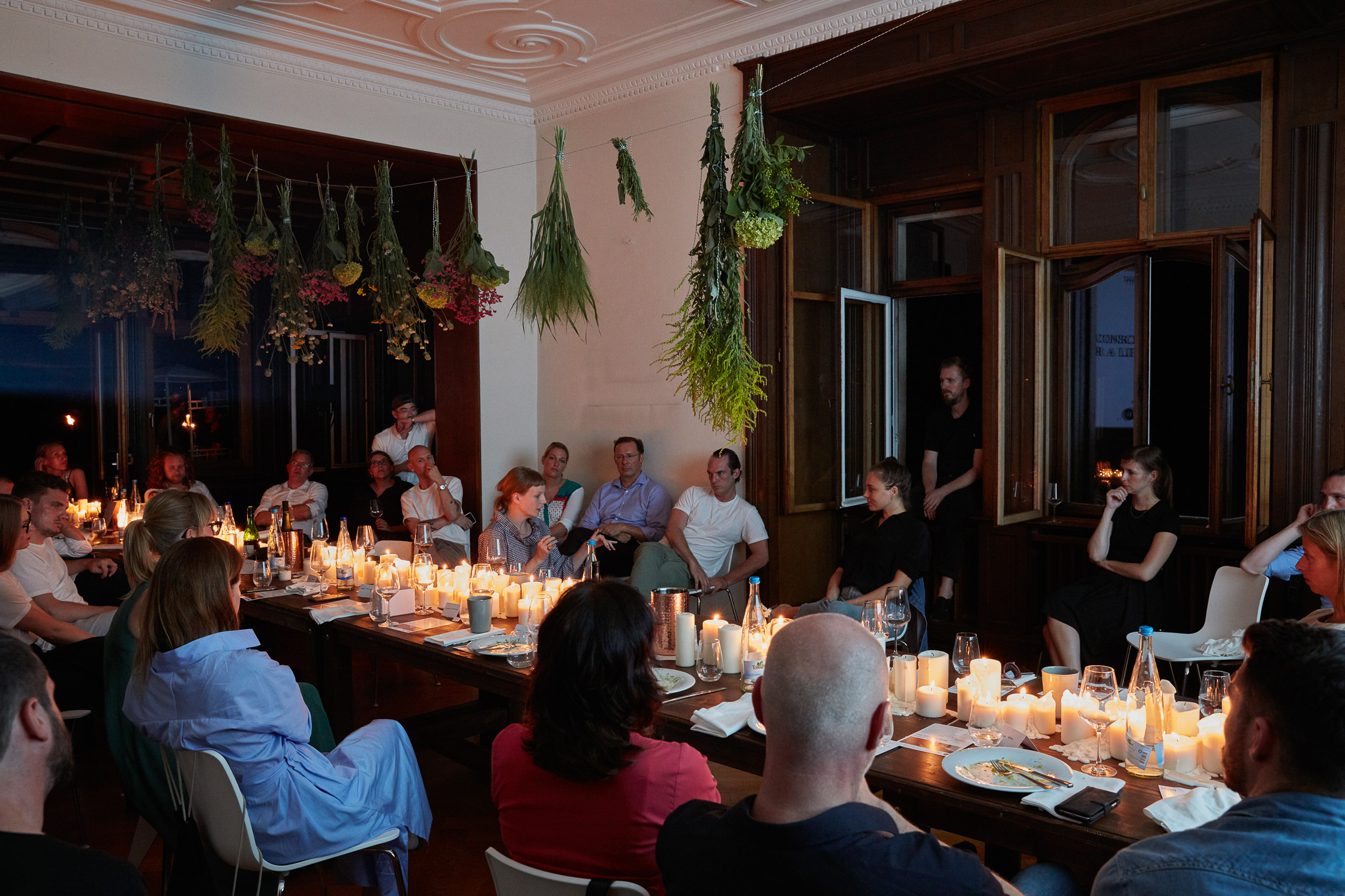
Anna: Arguably, the question is also how realistic it is for a big firm, at a similar level to Adidas for example, to implement changes from one day to the next that make the firm more ethical and environmentally friendly. Or if you have to give it some time. The question which seals it for me is: to what scale is it even possible to produce goods in an environmentally friendly and ethical way? Can the likes of Adidas, Nike, H&M and Zara even attempt to try?
Johanna: Unlike larger businesses, as a small design label, you can consciously decide to accept a smaller profit margin. Nevertheless, it is of course important that big firms also take sustainability seriously. What’s even more important though is that the consumer holds a lot of power. It is the customer who decides what and how much they buy. In any case, I’m convinced that a new awareness of sustainability will have in itself an effect.
Anna: Can this awareness also be brought about through transparency, where companies make their customers part of a collective process?
Sabine: That’s a really important point, yes. The more I know, the more I can decide to do, or indeed not to do something. It’s especially important when this transparency begins to incorporate the mainstream body of consumers. Naturally it’s a problem that sustainable products are often also expensive. If I want to feed a family of four at an organic supermarket, I’ll be met with a hefty bill at the cash register.
Anna: Because food is a daily necessity it takes on a somewhat different role. However, clothes are a different matter! Since one has more free will in what and when they choose to buy them—I don’t need a new blouse every week. Do we not need to rethink and fundamentally change the way in which we consume fashion? Not being able to have something is never nice but perhaps we should talk about the way in which we appreciate what we have and attribute value to things.
“Yes! We can think about fashion in a new way, and we can also re-approach the way we consume it.”
Dörte: Due to the fact that we’re so used to consuming so much when it comes to fashion, it becomes easy to conflate a necessity for change in the way we consume fashion with a renunciation of it. Nevertheless, to my mind this doesn’t have to necessarily be the case. Until two years ago I worked for Elle and was someone who enjoyed buying clothes regularly. Eventually I started to ask myself: Do I really need this? Does it make me happy? And what is it about clothes that even makes me happy? And then I resolved to stop shopping on the high street. Seemingly my resolution would result in it becoming more expensive to buy clothes but that can also be avoided by shopping affordable ‘slow fashion’ labels and of course buying vintage or second hand clothes, perhaps even designer second hand. What I want to say is yes! You can think about fashion in a new way, and we can also re-approach the way we consume it.
Sabine: If I buy an expensive product, I have waited to buy it and expect it to last. Therefore, in my opinion it being a good quality item is really important.
Johanna: It also depends on how you treat your things. I think that our generation is a bit lost, so to speak; good shoes shouldn’t be worn every day, you have to give them a rest from time to time! A good hanger is also so much better for your clothes than the metal ones that you get from the dry cleaners that make everything go a bit lumpy. Our grandmothers knew a thing or two! Those who really value their things and care for them can also enjoy them for longer.
Dörte: And that starts well before caring for the garment anyway, the process starts with well-cut and well-made items.
“It’s important to create new desires.”
Anna: Sustainability can and indeed must be an integral part of the design process. And then through treating their garments well the consumer can continue the development of sustainability. By treating our clothes well they look better for longer, and looking good is indeed what most people want from their wardrobe. One thing that most people don’t want is to be lectured. Therefore, in my opinion, we need to be a bit careful in this regard if we want to sensibly fill out the idea of conscious thought and this vast term ‘sustainability’. How do we make these serious and quite specific ideas about quality meaningful and fun?
Sabine: I think we’ve come back to this question of image. Whether or not Adidas with this Parley partnership attempts to whitewash their image and indeed their conscience—at the end of the day, the final product will reach lots of people and make the theme of sustainability more interesting and even a bit sexy for the mainstream. It’s important to create new desires and we need to remove the seriousness that surrounds the term sustainability. The best way to do this is to create high quality products that also look great. I think that desirability is a big factor.
Tim: Is sustainability’s image problem a communication problem? And if it costs exactly the same, do I consider the sustainable product to be more valuable because it was produced under better conditions?
Sabine: Big brands also release limited-edition products and collections; they are more expensive and are held by customers in higher esteem. Big labels in this way have the means to create such feeling amongst consumers and of course also have a very large potential audience that they can reach.
Tim: I think that accountable processes, transparency and clear information can change consumers’ attitudes. But it takes time and is also a matter of PR.
Johanna: True. In exactly the same way that consumers at the moment want to buy free-range eggs, they should also want to buy clothes that haven’t been sewn by children working in windowless factories.
A guest refers to the high quantities of items that 30 years ago could be produced locally and sustainably in the Swabian Alps and has since broken down. Dörte hopes that the small labels that she mentioned previously, can revitalize traditional craftsmanship in Germany, as well as in India. It’s about working closely with small firms—these relationships are mostly long-running, healthy and fulfilling working relationships.
An insight into the work of Perret Schaad and The Lissome
“If something really needs to change, then we all have to pitch in.”
Anna: In your opinion, whose role is it to make the fashion industry genuinely more responsible? The designers, the brands, the press or even the government? Who needs to get involved?
Dörte: I believe that we all have to pitch in. Of course, it’s downright unsettling for consumers to find out what’s really responsible. Nevertheless, that doesn’t mean that individuals can just lean back and relax. Buying lots of cheap products and producing lots of rubbish is always going to be bad for humans and the environment—that’s something that’s easily recognizable. But also the producers have a key responsibility. This is a disadvantage for labels; it’s expensive and requires them to comprehensively rethink their processes. Therefore, I am of the opinion that it makes sense for the government to instigate guidelines. Take smoking as an example, the restrictions placed on it have resulted in far fewer people smoking. Along with it comes the need for explanation and this necessitates the media taking on a role.
Sabine: In general, I agree. From a market perspective though I already see lots of brands taking on a high level of responsibility. Whoever wants to market itself as a premium brand should also take a conscious interest in all levels of the supply chain, including all those other to sales and communication. In this way no brand can avoid responsibility.
Some of our dinner guests were concerned about the ever-growing number of collections produced by fashion labels every year. These days, large chains are producing up to twelve collections a year. “These are advertised everywhere, pulling people in.” At least in the age of digitalization, “the whole industry is broken,” says one guest, “and mankind is to blame.” On the plus side, mankind can make it right again. In order to do this we need strong role models, and an entity that puts a hold on the economy and institutes a bottom line. For as long as there exists an industry in which to make money, money will be always be made. “There will never be any regulation of the market, we need instead to regulate ourselves,” according to the head of the board. “We need to define ourselves less based on what we own.”
What can or indeed should we all do right away? “Buy less, and very much follow the mantra of quality over quantity.” This point is something all four of our speakers agree on. Over dessert on the terrace overlooking the city we continued the discussion. This question of how we want to live in the future still has a long way to go, but at least we’ve started!

Thanks Stuttgart! Next stop: Düsseldorf. The Sooner Now continues. This joint initiative by FvF and MINI Germany is an ongoing discussion of the pressing questions of urban life – about cities and concepts. Find out more about upcoming events at thesoonernow.com. A look back at the previous dinner in Munich on ‘Vertical Farming’ can be found here.
Everything that MINI Fashion is up to can of course be found online. This portrait by FvF is an insight into the work of Johanna Perret and Tutia Schaad, who together comprise the design duo Perret Schaad. Dörte’s work on product sustainability is all up on her platform The Lissome. If you’re looking for suggestions to help you on your first steps into the world of sustainable products then cut to the chase and head to the online platform of our author at Viertel/Vor.
Text:Anna Schunck
Photography:Uwe Ditz
